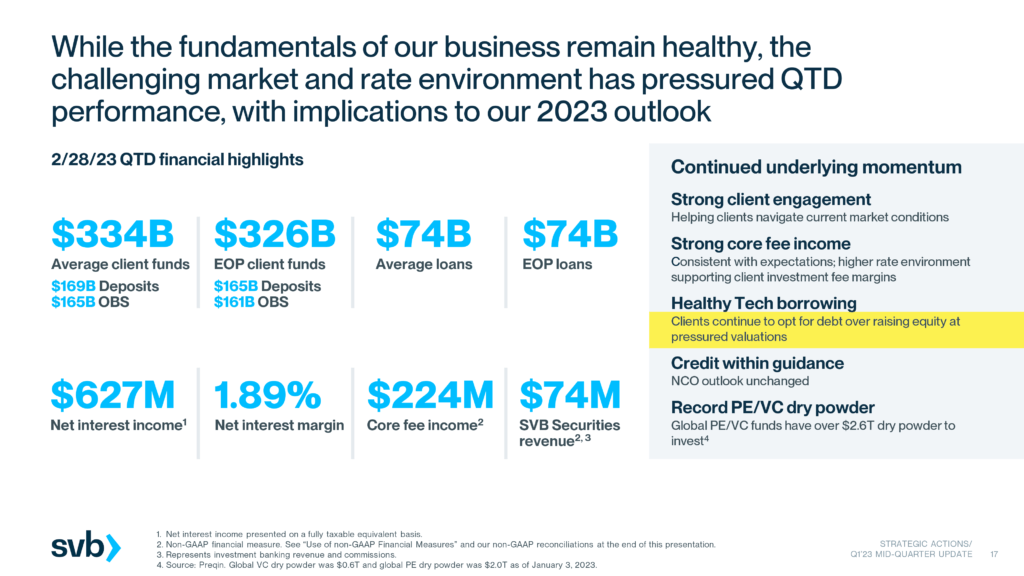B2B marketplaces are going to be big
$2.3B invested in them since 2019
But there is not a ton written about them
So here's a summary of my favorite articles, podcasts & principles on B2B marketplaces
🧵
$2.3B invested in them since 2019
But there is not a ton written about them
So here's a summary of my favorite articles, podcasts & principles on B2B marketplaces
🧵
https://twitter.com/asanwal/status/1343710387842256907
2/ This by the team @BessemerVP is a great starting point
They discuss
1. What's changed that makes B2B marketplaces possible today
2. The qualities of successful B2B marketplaces
3. B2B marketplace models esp for high-friction goods
bvp.com/atlas/b2b-mark…
They discuss
1. What's changed that makes B2B marketplaces possible today
2. The qualities of successful B2B marketplaces
3. B2B marketplace models esp for high-friction goods
bvp.com/atlas/b2b-mark…
3/ This by @onecaseman is particularly relevant to many B2B marketplaces
He digs into into 4 strategies for how to thrive in low frequency marketplaces.
Examples are more consumer but the principles likely hold for B2B
caseyaccidental.com/low-frequency-…
He digs into into 4 strategies for how to thrive in low frequency marketplaces.
Examples are more consumer but the principles likely hold for B2B
caseyaccidental.com/low-frequency-…
4/ Here is a quick way to think about frequency vs average order value (AOV)
The examples here are more consumer but again, within B2B, we're seeing a diversity of marketplaces along this spectrum
Varies by good, industry
The examples here are more consumer but again, within B2B, we're seeing a diversity of marketplaces along this spectrum
Varies by good, industry
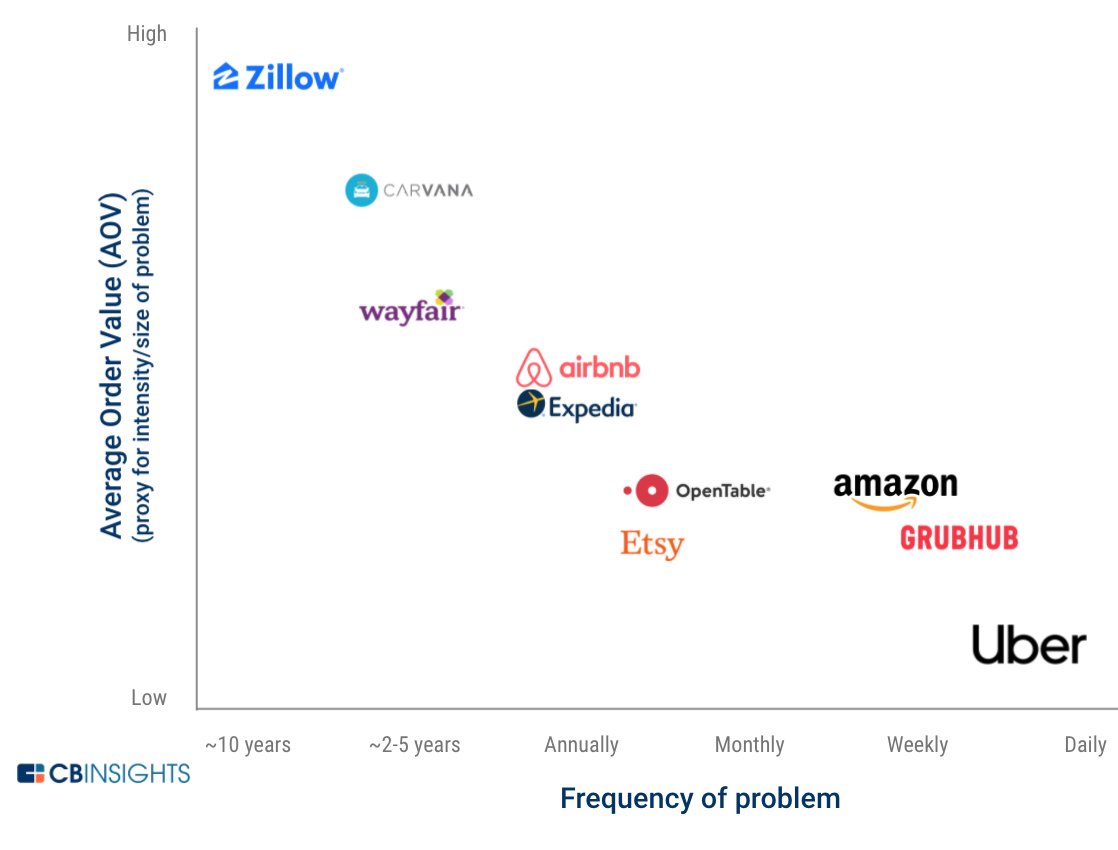
5/ @BoweryCapital has done a number of great conversations with B2B marketplace investors and operators and you can see the index of those here
bowerycap.com/blog/insights/…
I'll highlight a couple I particularly liked
bowerycap.com/blog/insights/…
I'll highlight a couple I particularly liked
6/ This convo with AJ Rohde of @thomabravo is a good one
AJ is firmly in the camp for B2B marketplaces that the demand side is what you have to ‘tip’ first stating “you get a lot more done when the demand side (OEMs) blesses you.”
bowerycap.com/blog/insights/…
AJ is firmly in the camp for B2B marketplaces that the demand side is what you have to ‘tip’ first stating “you get a lot more done when the demand side (OEMs) blesses you.”
bowerycap.com/blog/insights/…
7/ This w/ @fabricegrinda is also good
Versus AJ, Fabrice believes B2B startups "lock in your supply by offering biz a free SaaS tool to incorporate into their workflows & manage their teams”
Clearly, there is no formula for B2B marketplaces
bowerycap.com/blog/insights/…
Versus AJ, Fabrice believes B2B startups "lock in your supply by offering biz a free SaaS tool to incorporate into their workflows & manage their teams”
Clearly, there is no formula for B2B marketplaces
bowerycap.com/blog/insights/…
8/ "Magical Growth Loops" by @lennysan is excellent [paywall]
He covers:
Supply driving demand
Demand driving supply
Demand driving demand
Supply driving supply
Again, bit more consumer focused but highlights likes of Faire showing relevance to B2B
lennysnewsletter.com/p/magical-grow…
He covers:
Supply driving demand
Demand driving supply
Demand driving demand
Supply driving supply
Again, bit more consumer focused but highlights likes of Faire showing relevance to B2B
lennysnewsletter.com/p/magical-grow…
9/ No thread on marketplaces would be complete without @bgurley's thinking
More consumer focused but here's some of the greatest hits IMO
10 factors to consider when evaluating a marketplace is 🔥
abovethecrowd.com/2012/11/13/all…
More consumer focused but here's some of the greatest hits IMO
10 factors to consider when evaluating a marketplace is 🔥
abovethecrowd.com/2012/11/13/all…
10/ For B2B marketplaces, a couple of pts in it are particularly relevant
#3 Where the technology offering greatly enhances the user experience
#9 Being part of the payment flow is superior to not being a part of the payment flow.
#3 Where the technology offering greatly enhances the user experience
#9 Being part of the payment flow is superior to not being a part of the payment flow.
11/ We are seeing an incredible diversity in B2B marketplaces right now
And they're starting to attack more complex, highly variable "SKUs" and higher consideration B2B buying decisions
And they're starting to attack more complex, highly variable "SKUs" and higher consideration B2B buying decisions

12/ This evolution in B2B marketplaces we're seeing from low variability SKUs to more highly variable SKUs is very analogous to what we've observed in consumer-focused marketplaces 
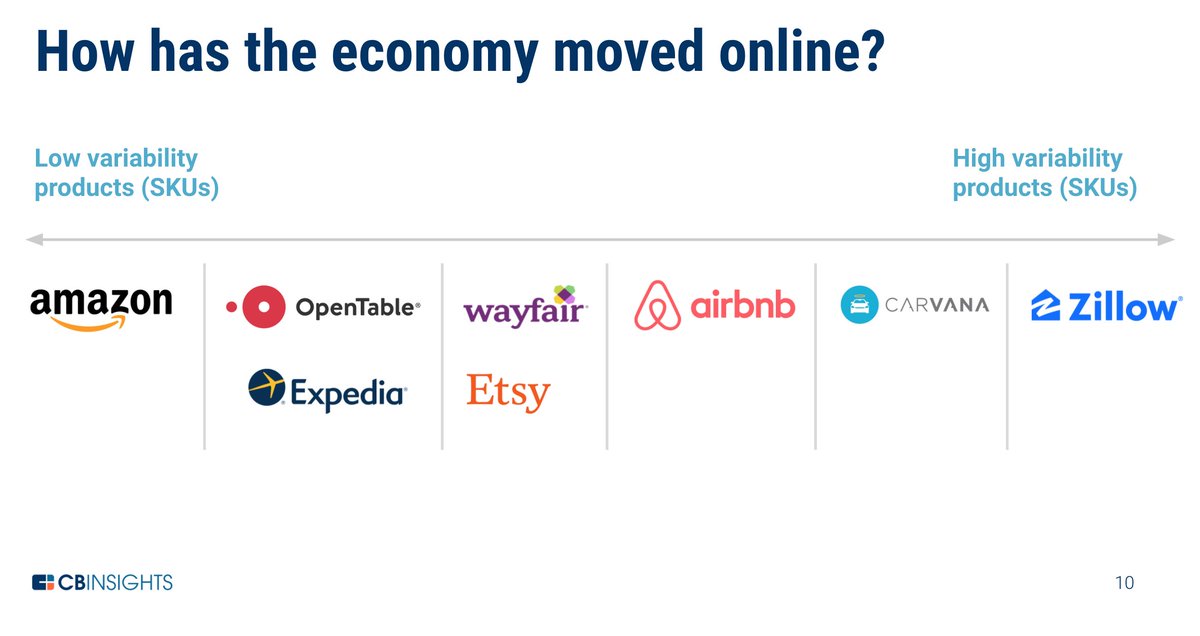
13/ This by @jbreinlinger which is from 7 years ago on what type of marketplace are you is very enlightening
Given AOV and complexity of B2B purchases, it would seem most will be double commit but not always
acrowdedspace.com/post/957422754…
Given AOV and complexity of B2B purchases, it would seem most will be double commit but not always
acrowdedspace.com/post/957422754…
14/ Here is a graphic to explain and highlight the differences between a buyer vs supplier picks vs a double commit marketplace 
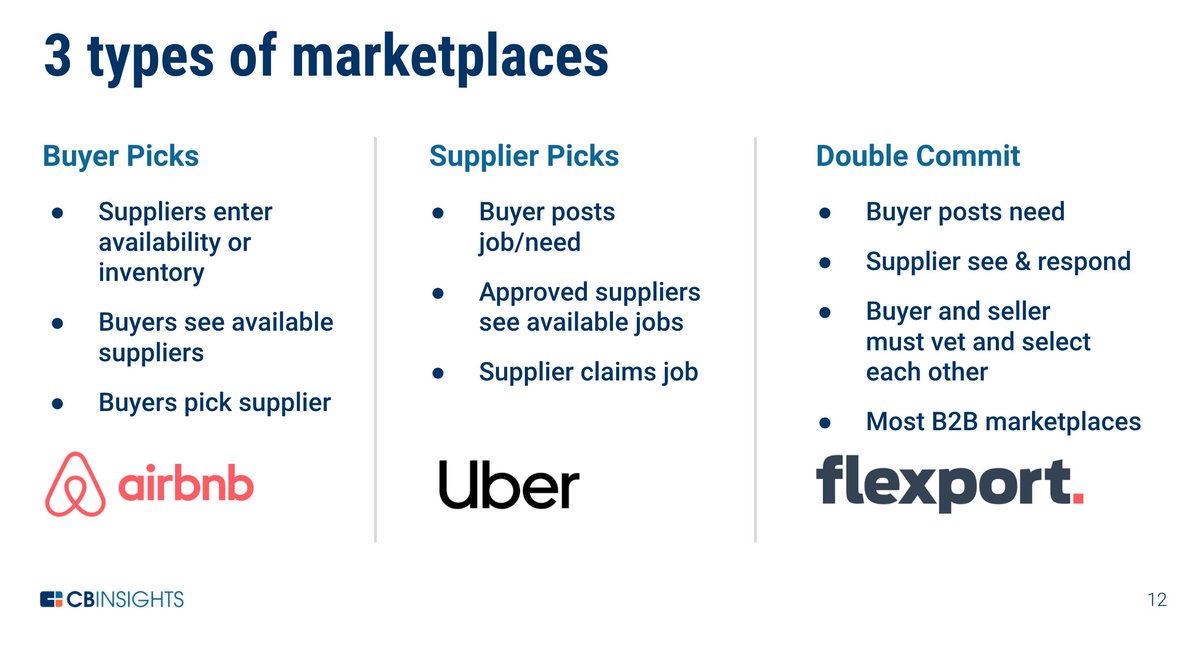
15/ Another gem by @bgurley on @patrick_oshag podcast
He covers
- liquidity quality in a marketplace
- network effects and capturing those
And my favorite, why you want demand-side promiscuity in a marketplace
podcasts.apple.com/us/podcast/inv…
He covers
- liquidity quality in a marketplace
- network effects and capturing those
And my favorite, why you want demand-side promiscuity in a marketplace
podcasts.apple.com/us/podcast/inv…
16/ Bowery metrics to evaluate both buy and sell side liquidity
"Liquidity is simply how easily and quickly buyers and sellers can find each other in the marketplace. A2-sided B2B marketplace should track both seller & buyer liquidity"
bowerycap.com/blog/insights/…
"Liquidity is simply how easily and quickly buyers and sellers can find each other in the marketplace. A2-sided B2B marketplace should track both seller & buyer liquidity"
bowerycap.com/blog/insights/…
17/ A simple view on 2 dominant strategies to get to marketplace liquidity
Either by focusing on geography or category
Almost universal agreement that B2B marketplaces should start narrow, get liquidity and then expand
Niche down FTW!
Either by focusing on geography or category
Almost universal agreement that B2B marketplaces should start narrow, get liquidity and then expand
Niche down FTW!
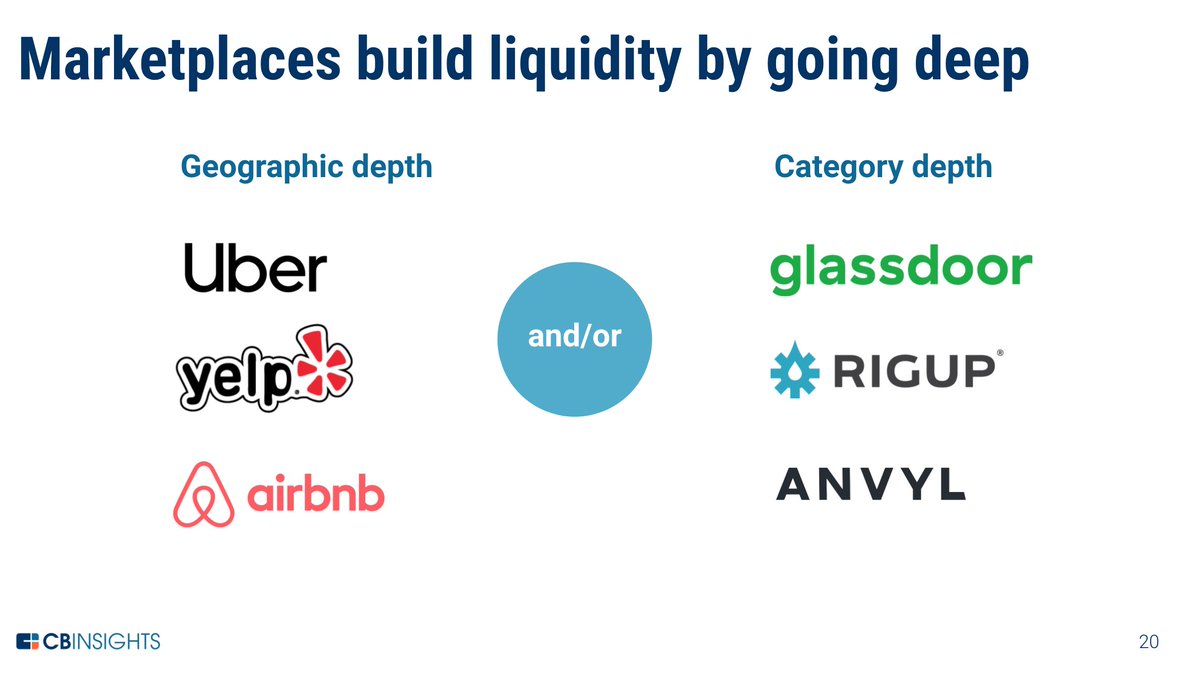
18/ I've got ~30 more podcasts and articles to go through by the likes of @peteflint of @NFX, @jeff_jordan & @andrewchen of @a16z as well as more from likes of @jbreinlinger, @lennysan and @onecaseman so will continue to add to this
In the meantime, 2 things
First, a question
In the meantime, 2 things
First, a question

20/ If we assume covid accelerated that by 2-3x, it still means 70-80% of the economy remains offline
This spells massive opportunity for B2B marketplaces
More resources to be added
Any resources on B2B marketplaces you really love?
This spells massive opportunity for B2B marketplaces
More resources to be added
Any resources on B2B marketplaces you really love?

21/ this by @JamesCurrier @NFX is 💯
Learnings:
- in B2B mkts w/ brokers, help them do jobs better
- don’t fear managed marketplace to create liquidity
- network fx is goal but may embed a SaaS tool into the workflow of demand or supply-side
nfx.com/post/24-ways-b…
Learnings:
- in B2B mkts w/ brokers, help them do jobs better
- don’t fear managed marketplace to create liquidity
- network fx is goal but may embed a SaaS tool into the workflow of demand or supply-side
nfx.com/post/24-ways-b…
• • •
Missing some Tweet in this thread? You can try to
force a refresh













